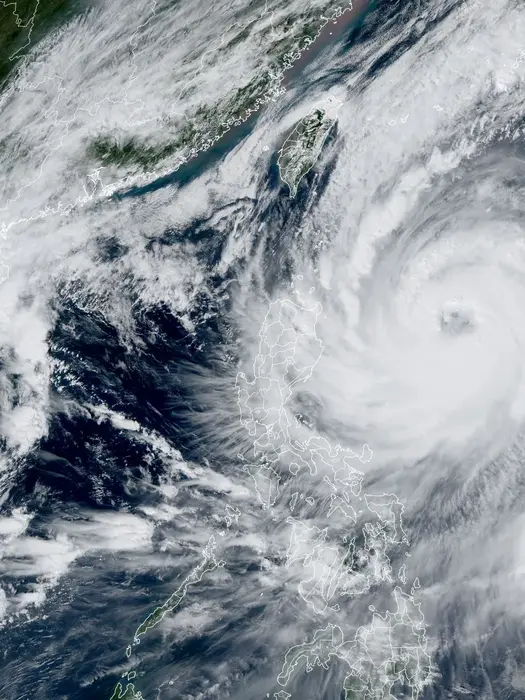
Outcome
The project improves disaster coordination and reduces response times, enabling faster recovery for communities.
Stakeholder feedback has refined key features, including multilingual support and easier data entry.
By fostering partnerships with local and international organisations, this platform seeks to build a cohesive, resilient response network that adapts to evolving community needs and ensures rapid access to critical information.
Solution
BayanAI is an AI-powered platform that centralises disaster response, using real-time weather data, satellite imagery, and crowdsourced reports to improve situational awareness.
The platform integrates all disaster stages, allowing organisations to coordinate, optimise resources, and communicate more effectively.
Early testing highlighted needs for regional language support, clearer role definitions, and simplified data entry for field teams.
Context
The Philippines, among the world’s most disaster-prone countries, faces frequent, severe climate disasters affecting millions yearly.
Current response efforts are fragmented, lacking a unified platform to share real-time data, coordinate responses, and allocate resources efficiently.
This fragmentation leaves communities vulnerable, with critical information gaps that delay intervention and intensify recovery challenges.
What we uncovered in the research
Limited Real-Time Data Restricts Preparedness: Stakeholders face delays and inefficiencies without timely data. Centralising data would improve readiness and allocation.
Fragmented Efforts Waste Resources: Uncoordinated responses duplicate resources. A unified framework could align efforts and maximise impact through transparency.
Local Knowledge Is Underused: Community insights are often ignored, reducing effectiveness. Integrating local data would better target actual needs.
Opaque Protocols Undermine Trust: Inconsistent protocols slow collaboration and reduce trust. Transparent guidelines would improve cooperation and response speed.
Information Gaps Increase Vulnerability: Limited access leaves underserved groups at risk. Accessible, multilingual tools would bridge gaps and improve inclusivity.
Our process
1. Research and Discovery: Conducted research, stakeholder mapping, and interviews with Filipino residents and NGOs, identifying data access and response gaps.
↓
2. Prototype Development: Built initial platform interfaces, service blueprints, and architecture, tested with stakeholders for usability and relevance.
↓
3. Iterative Testing: Refined based on feedback, improving user experience, role-based access, and multilingual support.
↓
4. Future Planning: Develop strategic partnerships and seek grants to support long-term scaling and sustainability.
Tools
Stakeholder Mapping
Service Blueprinting
Journey Mapping
Empathy Mapping
System Analysis
Strategic Planning
Qualitative Interviews
Prototyping & Usability
Information Architecture
Co-Design Workshops
Our Strategy
Vision: Create a community-driven AI disaster management system to improve preparedness, optimise resources, and foster resilience.
Approach:
Real-Time Data: Use weather, satellite, and crowdsourced data to improve situational awareness.
Collaboration: Provide a platform for NGOs, government, and leaders to coordinate and share insights.
Resource Optimisation: Use AI to direct resources to the highest-need areas.
Local Knowledge: Add community insights for accuracy and relevance.
Continuous Learning: Design a system that improves with each response.
Measurement: Assess impact through metrics on response times, resource efficiency, user engagement, and community resilience.
Prototypes
Prototypes tested with citizens, NGOs, and experts in AI modelling at Google DeepMind:
Interface Prototype: User-friendly, real-time data interface for disaster-affected areas.
Feedback: Effective but needs customisable dashboards.
Service Blueprint: Maps the end-to-end journey from data input to emergency response.
Feedback: Clear touchpoints but requires steps for local adjustments.
Information Architecture: Organised layout for diverse stakeholder access.
Feedback: Well-structured, with suggestions for clearer labelling.
Project Tags
+ Social Impact
+ Community Development
+ AI & Technology
+ Capacity Building
+ Design Award
Services
+ Service Design
+ Stakeholder Engagement
+ System Analysis
+ Prototyping
+ Strategic Planning
+ User Testing
Partners
Royal Society of Arts X Google DeepMind, NGOs
Year
2023-24
Summary
BayanAI aims to revolutionise disaster response in the Philippines by using AI to centralise real-time data, improve situational awareness, and enhance resource allocation during climate emergencies.
Early prototypes, including interfaces, service blueprints, and storyboards, were developed and tested with key stakeholders, revealing areas for improvement, such as language accessibility and role clarity.
Future plans involve deepening partnerships with NGOs, refining the interface for multilingual use, and expanding training for seamless platform integration.
Who the project is for
Local government units, humanitarian organisations, community leaders, NGOs, and disaster response teams in the Philippines.
My Role
Service Designer and Strategic Planner.
Responsible for creating initial prototypes, service blueprint, information architecture, and user interfaces for an AI-powered disaster response system. Coordinated stakeholder testing and led future planning for stakeholder integration.





































